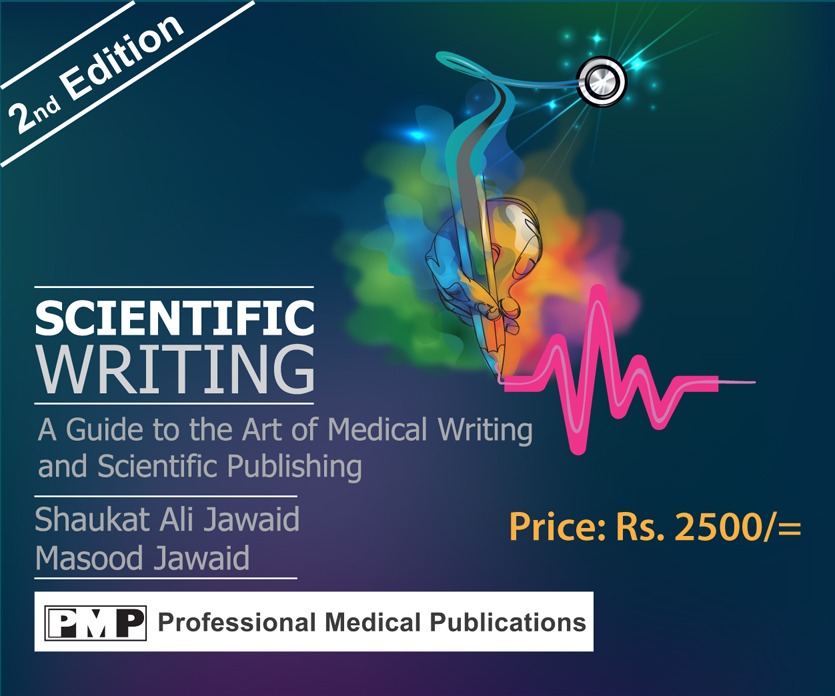An informative useful booklet for practicing physicians
KARACHI: This 106-page booklet, comprising eight chapters, is an extremely informative and valuable resource for practicing physicians as well as medical students. Authored by Prof. Shahid Shamim and Dr. Saima Pervaiz Iqbal, it covers various aspects of medical ethics.
The foreword has been written by Dr. Aisha Malik, a clinical teacher and researcher with a special interest in bioethics. She aptly notes that “Virtues, values, and duties are essential elements of a good professional life.” The book aims to raise awareness of ethical principles among practicing physicians and to introduce medical students to this critical aspect of professional conduct. Members of the medical profession must be well-prepared for the ethical challenges they will face, and this book serves as an excellent guide.
The first chapter introduces the subject of ethics and professionalism, explaining in detail what these concepts mean for physicians. Ethics is defined as the philosophy that deals with morality and helps distinguish between good and bad, right and wrong actions. Medical ethics, more specifically, is described as “a set of moral principles that govern the practice of medicine.” Professionalism, on the other hand, is defined as “the skill, good judgment, and polite behavior expected from someone trained in a particular profession.”
The authors trace the history of medical ethics, noting that the term was first introduced by English physician Thomas Percival in 1803. The American Medical Association adopted its first Code of Ethics in 1847. Later, in 1948, the World Medical Association introduced the Declaration of Geneva, considered the modern version of the Hippocratic Oath. In 1964, the expanded version of the Nuremberg Code was published, which came to be known as the Declaration of Helsinki. In Pakistan, the regulation of professional conduct in medicine is overseen by the Pakistan Medical and Dental Council (PMDC).
The book outlines the four foundational principles of contemporary medical ethics: Autonomy, Beneficence, Non-Maleficence, and Justice. Given Pakistan’s status as a Muslim country where religion deeply influences daily life, it would have been beneficial had the authors also referred to the principles of Islamic bioethics, as outlined by world-renowned scholar Prof. Abdulaziz Sachedina from (USA). These principles include: Do no harm, No harassment, Protection from distress, Necessity to prevent harm, and Balancing individual and community welfare. Regarding brain death, Prof. Sachedina argues that we still lack sufficient knowledge to universally accept it as a definitive criterion of death.
A key point in Islamic bioethics is that respect for autonomy has its limits. While autonomy is highly emphasized in modern medical ethics, in Islamic bioethics, if a patient with a communicable disease poses a threat to society, they must be treated—even against their will.
Chapter Two focuses on communication with patients and colleagues, covering various forms such as verbal, non-verbal, and written communication. Healthcare professionals are expected to communicate clearly and effectively. When interacting with patients or peers, they should use concise language and avoid sounding preachy. Monitoring tone, dressing professionally, and exhibiting patience all contribute to a positive impression and help build rapport. A warm welcome and a smile can go a long way in establishing trust.
Written communication must be clear, concise, and accurate to avoid misunderstandings and ensure patient safety. Proper documentation is crucial. The chapter outlines key elements of a complete prescription: patient’s name, medical record number, gender, age, date and time, provisional diagnosis, and any co-morbidities. Unfortunately, in practice, many prescriptions are incomplete. This chapter also provides guidelines on patient referrals, emphasizes the importance of active listening, and highlights the need for training in listening skills—so doctors do not rush to conclusions before hearing patients out.
The book also addresses cultural sensitivities. In conservative societies, actions like a handshake or physical touch with the opposite sex may lead to misunderstandings. Thus, healthcare professionals must communicate with sensitivity and respect for social norms.
0Practices such as unnecessary hospitalizations, overprescription of drugs or tests for financial gain, are deemed unethical and unprofessional.
Balancing individual rights with public safety presents a major ethical challenge. Physicians must evaluate risks and benefits carefully. Chapter Five discusses research ethics, including the historical development of ethical guidelines, the role of ethics committees and Institutional Review Boards (IRBs). Although many medical institutions in Pakistan now have Ethics Committees/IRBs, their composition is often flawed, and lack of monitoring and accountability affects their effectiveness—an issue that urgently needs attention.
The book also tackles important issues like scientific misconduct and authorship criteria. In Pakistan, as in many countries, gift authorship remains a serious problem, and there is a need to curb this form of intellectual corruption.
Additional chapters address ethical issues in sex and gender disorders, common healthcare controversies, medical errors, professional negligence, and physician-assisted suicide. Most of the information is well-referenced and evidence-based.
This book is published by the Pakistan Medical Association, Karachi, in collaboration with Koohi Goth Publications, and is priced at Rs. 1,000. It will prove extremely useful to readers and can serve as a guide for making ethically sound decisions in professional practice—thereby promoting ethical standards in the medical field. — SAJ



